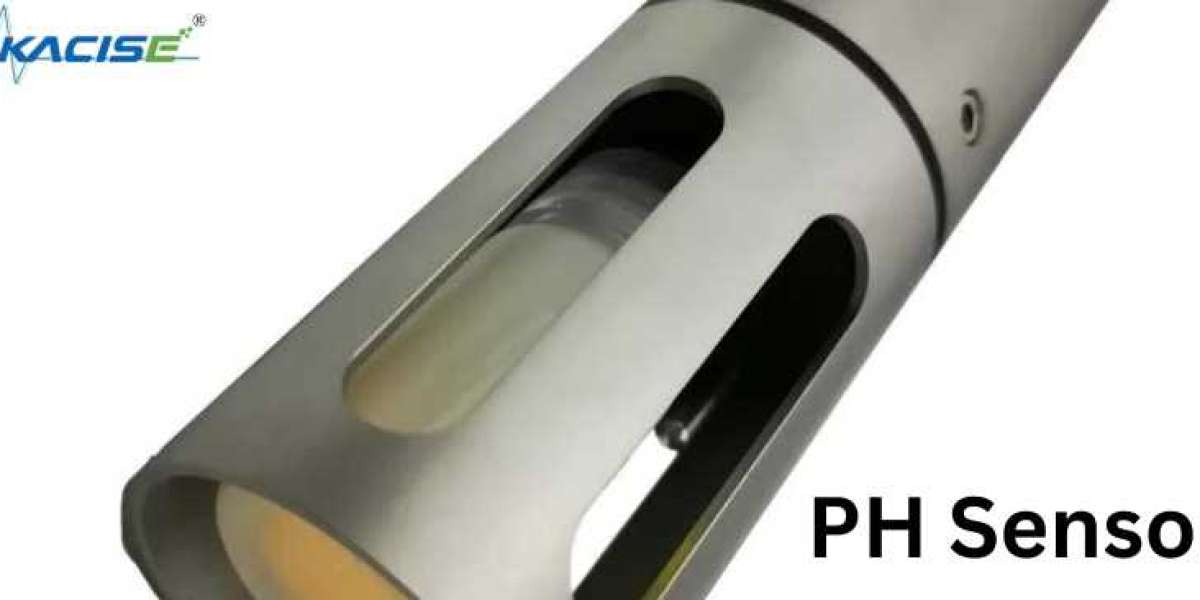But how exactly do these sensors work? In this blog, we’ll explore the basic principles, components, and applications of pH sensors, shedding light on the technology that allows us to measure pH accurately.
What is pH?
Before we dive into the workings of a pH sensor, it’s important to understand what pH is. The pH scale ranges from 0 to 14, with 7 being neutral. A pH value less than 7 indicates an acidic solution, while a pH greater than 7 indicates an alkaline (or basic) solution. The pH scale measures the concentration of hydrogen ions (H⁺) in a solution, with higher concentrations resulting in lower pH values (more acidic), and lower concentrations leading to higher pH values (more alkaline).
The Basic Working Principle of a pH Sensor
A pH sensor operates based on the principle of measuring the hydrogen ion concentration in a solution. The sensor detects the potential difference that forms between two electrodes when immersed in a solution. This potential difference is directly related to the pH of the solution.
Most pH sensors consist of two main components: a reference electrode and a measuring electrode. Both electrodes are typically made from materials that are capable of responding to changes in hydrogen ion concentration, usually silver chloride (AgCl) or similar compounds. These electrodes are housed in a special pH glass membrane that reacts to the H⁺ ions in the solution.
The Components of a pH Sensor
Glass Electrode (Measuring Electrode): The glass electrode is the primary component of the sensor. This electrode is made from a special glass that is sensitive to hydrogen ions. When placed in a solution, it forms an electrical potential that is proportional to the pH of the solution. The surface of the glass electrode interacts with the hydrogen ions, and the difference in ion concentration between the solution and the electrode creates a measurable voltage.
Reference Electrode: The reference electrode provides a stable reference potential against which the measuring electrode’s potential can be compared. It is typically a silver/silver chloride electrode or a combination of a glass electrode and a reference electrode in more advanced systems. The reference electrode ensures the measurements remain stable and consistent.
Membrane: The pH-sensitive glass membrane is typically semi-permeable, allowing hydrogen ions to pass through and interact with the internal solution inside the electrode. This interaction leads to the generation of an electrical potential that corresponds to the pH of the solution.
Internal Reference Solution: Inside the pH electrode, there is often a potassium chloride (KCl) solution, which helps maintain a constant ionic environment to stabilize the potential readings.
How the Sensor Measures pH
Once the pH sensor is immersed in a solution, the interaction between the hydrogen ions and the glass electrode generates a voltage. This voltage is proportional to the pH of the solution. The reference electrode provides a stable voltage against which the potential of the glass electrode is compared. The sensor then sends this information to a connected pH meter or data acquisition system, which converts the voltage into a readable pH value.
Applications of pH Sensors
pH sensors are widely used in various fields, including:
- Environmental Monitoring: Measuring the pH of water bodies, such as rivers, lakes, and oceans, to assess pollution levels and water quality.
- Industrial Processes: Monitoring pH levels in chemical production, water treatment, and food processing to ensure optimal conditions.
- Agriculture: Testing soil pH to determine its suitability for certain crops or to guide fertilization.
- Medical: Monitoring the pH of body fluids, such as blood or urine, to detect imbalances or diseases.
Conclusion
pH sensors are remarkable devices that help us monitor and maintain the balance of acidity and alkalinity in a wide range of environments. By understanding how these sensors work, we can better appreciate their critical role in industrial, environmental, and scientific applications. With ongoing advancements in sensor technology, pH sensors are becoming more accurate, durable, and easier to use, making them an invaluable tool for various fields.



